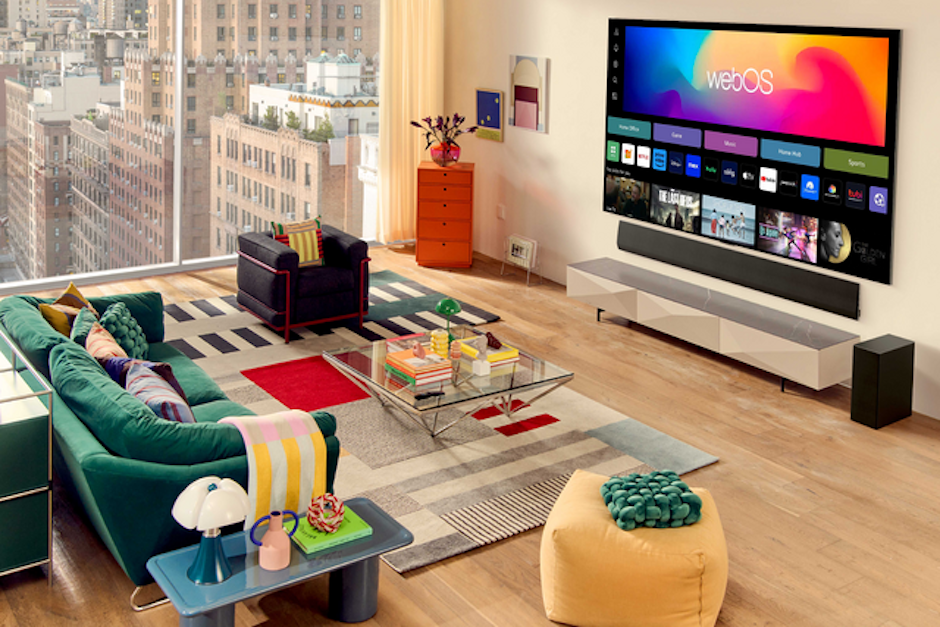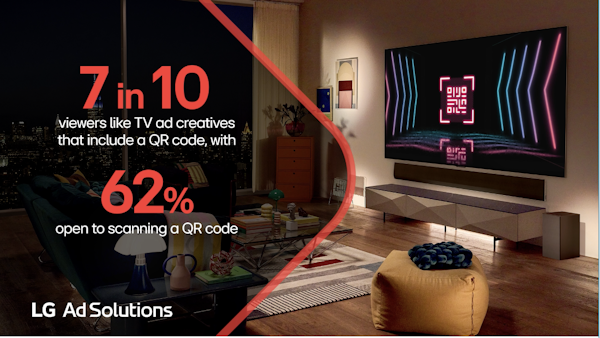Shoppable TV brings the store to the living room - here's how brands can capitalize
Shoppable ads enable marketers to create a highly engaging, innovative, and seamless advertising experience for audiences, says Tony Marlow (CMO, LG Ad Solutions). So how can brands use them effectively?

This year’s CES made it clear how rapidly the world of TV is evolving. From transparent OLED TVs to truly immers
ive watching thanks to ground-breaking AR headsets, to Netflix making its CES floor debut.
The excitement around TV screens shows that, despite the emergence of other innovations, these are still the most prized screens in the room for many. Smart TVs and the advancement of streaming environments has opened up a whole new world for advertisers to engage consumers and shorten the path to purchase.

This is shoppable TV – ad formats that allow consumers to purchase products directly from their screens. While ads have played a role in the TV-watching experience for audiences since its inception, there has traditionally been a disconnect between audiences viewing an ad and making a purchase. The internet has helped to shorten that distance and allowed audiences to shop from the comfort of their couch, but marketers have been unable to gain a truly holistic view of the entire purchase journey.
Shoppable ads not only change this, but enable marketers to create a highly engaging, innovative, and seamless advertising experience for audiences.
Narrowing the gap between TV and purchase
2024 may be the breakout year for shoppable ads and their application has already been gathering steam. Paramount announced that shoppable ads would be trialled on its Australian viewers, while in the UK, broadcasters ITV and Channel 4 have launched shoppable TV. With 81% of viewers stating that they were influenced by a TV ad in their shopping decisions and 63% often discovering new brands and products through TV ads, it's essential that brands are able to turn this interest into sales through a more convenient shopping experience.
Audiences are also increasingly keen to see shoppable ads – 51% of CTV users wish they could shop online using their TV, and 29% already do. These ads are already driving sales effectively for brands. Almost three-quarters (70%) of those who have engaged with a shoppable ad have stated that they have then bought a product.
For brands, shoppable ads will be vital to standing out in a congested ad market. As Amazon Prime launches its new ad-funded tier, the wealth of options available for brands to reach audiences grows – but at the same time competition will only increase. It is expected that Amazon will earn $4.8bn between its ad revenue and subscriptions. With this much money entering CTV, brands need to rely on more than just unique creative to cut through.
The campaign for the Barbie movie last year had many marketing successes, and none more so than its impressive CTV campaign that harnessed ads with an interactive element. Not only were viewers treated to a 30-second clip of the film, but they were also invited to answer interactive trivia questions.
On top of this, QR codes and click-to-shop elements allowed viewers to directly purchase cinema tickets This showed the breadth of what new and exciting ad capabilities are available to advertisers on CTV. Goodbye are the days where advertisers can only choose from a 15 or 30-second commercial.
Mastering screen to sale with shoppable TV
Shoppable ads are already starting to filter onto the TV screen, primarily in the form of QR codes. During the pandemic the use of QR codes became more widespread, with every demographic becoming comfortable with utilising them to access everything from government information to restaurant menus.
With audiences’ already familiar, it is unsurprising the ads with QR codes embedded are already driving results for brands. According to our own research at LG Ads, over a third (38%) of audiences are likely to make a purchase after scanning a QR code on a TV ad, while half (49%) will scan a QR code on a TV ad to take advantage of a discount. This is no surprise considering that 91% of viewers watch TV while multitasking on another device.
When shoppable ads are done right, they also create a valuable feedback loop for advertisers. Shoppable ads collect data on the clicks and scans that a campaign receives, enabling marketers to continue to optimize their campaigns by tweaking targeting and ad creative to maximize returns. This more holistic oversight into your audience enables a truly omnichannel approach to campaigns.
However, QR code enabled ads are just the beginning. As audiences become more comfortable with shopping from their TVs and the technology to deploy them becomes increasingly sophisticated, marketers will have a plethora of highly engaging ad types at their disposal. Quick checkout buying through a TV set, click-to-save options, and the ability to utilise the voice capabilities of a TV to save an item to a cart are already being trialled, opening up a range of possibilities for forward-thinking marketers.
Shoppable & beyond
When executed effectively, ads are a vital part of discovery for audiences – this has always been a core part of the TV-watching experience. Shoppable ads however bridge that final gap, making shopping seamless and without interrupting the viewing experience. Not only do these ads enhance the user experience of shopping via the primary household screen but also close the attribution gap for advertisers.
We are only just beginning to see what shoppable ads can bring to viewers. As the technology develops and consumers become more comfortable with adding the TV as an additional point in the purchase journey, the industry will have access to innovative and impactful ways to reach viewers, not only driving sales, but creating a closer bond with audiences.
By Tony Marlow (CMO, LG Ad Solutions).

